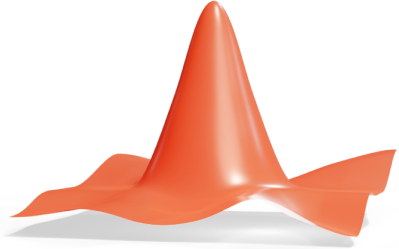10th Grade
What are inverse functions?
{
"voice_prompt": "",
"manuscript": {
"title": {
"text": "What are inverse functions?",
"audio": "What are inverse functions?"
},
"description": {
"text": "An inverse function does the opposite of what the original function does. If you apply a function and then its inverse, you end up back where you started ",
"audio": "An inverse function does the opposite of what the original function does. If you apply a function and then its inverse, you end up back where you started."
},
"scenes": [
{
"text": "In math, a function is a rule that takes an input, performs an operation on it, and gives an output. For example, consider the function f of x equals two times x.",
"latex": "f(x) = 2x"
},
{
"text": "If you input the number three, the function calculates f of three equals two times three, which equals six. If you input the number five, the function calculates f of five equals 2 times five, which is 10. So, if input is three, the output is six. And if the input is five, you get 2 times 5, which is 10. And if you input 7, you get f of 7 equals two times 7, which is 14. The function times the input by two.",
"latex": "f(3) = 2\\times 3=6, \\quad f(5) = 2 \\times 5 = 10 \\quad f(7)=2 \\times 7 = 14 "
},
{
"text": "Now, if you want to reverse the process and go from the output back to the original input, you use something called an inverse function. In this case, you want to go from 6 to 3, 10 to 5, 14 to 7. That is to divide by two. You denote an inverse function like this With a small minus 1 between f and x, and read it like f inverse of x. In this case your inverse function need to divide the input by two. So you get f inverse of x equals x divided by two.",
"latex": "f^{-1}(x) = x\\div 2"
},
{
"text": "Let's try some inputs. If you input 6, you get 6 divided by two, which equals 3. If you input 10, you get 10 divided by two, which equals 5 and if you input 14 you get 14 divided by 2, which equals 7. And you are back where you started. The inverse function did the opposite of what the first function did, which is exactly what you wanted",
"latex": "f^{-1}(6) = 6\\div 2=3, \\quad f^{-1}(10) = 10 \\div 2 = 5 \\quad f^{-1}(14)=14 \\div 2 = 7 "
},
{
"text": "Let\u2019s look at another example. Say the function is:\r\n\r\nf of x equals x plus 3.\r\n\r\n This means: take any number and add 3.\r\nThe inverse function would be:\r\n\r\nf inverse of x equals x minus 3.\r\n\r\n It does the opposite\u2014it subtracts 3 and bring you back to the number you started with.\r\nSo if f of 5 equals 8, then f inverse of 8 equals 5.",
"latex": "f(x) = x + 3, \\quad f^{-1}(x) = x - 3"
},
{
"text": "And if f of 7 equals 10, then f inverse of 10 equals 7.",
"latex": "f(7) = 7 + 3 = 10, \\quad f^{-1}(10) = 10 - 3=7"
},
{
"text": "Inverse functions are super useful in math. They help you solve equations, reverse operations, and understand how two things are connected.",
"latex": "\\text{If } f(x) = y, \\text{ then } f^{-1}(y) = x"
}
],
"outro": {
"text": "An inverse function does the opposite of what the original function does. If you apply a function and then its inverse, you end up back where you started",
"audio": "An inverse function does the opposite of what the original function does. If you apply a function and then its inverse, you end up back where you started"
}
}
}
en_R1_FU_what_inverse_functions.jsonOpen with Text Editor Share
Displaying en_R1_FU_what_inverse_functions.json.




















